
We just returned from KubeCon + CloudNativeCon 2019 which was held in beautiful Barcelona, Spain last week.
While at the show, we interacted with more than 1,000 attendees and had almost 500 attendees complete our survey at the booth, to give us an insight into their use of Kubernetes. Here are the five most important takeaways from the survey results:
1. Massive increase of Kubernetes in production
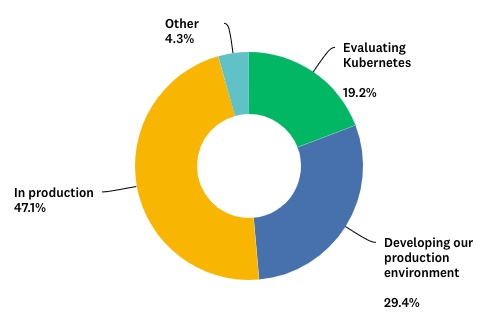
It is true that an event like KubeCon tends to draw the most advanced Kubernetes users and the results of surveys here would be skewed and represent only a sample of the broader enterprise population. Despite that, the fact that almost 50% of the survey respondents mentioned that they are in production is astonishing given that the Kubernetes project is still relatively young.
Going into production with mission critical applications involves planning for repeatable, predictable, and automated day-2 operations — such as upgrades, SLA management, backups, Disaster Recovery, Multi-cloud abstractions and more – all while maintaining performance, uptime, and reliability.
These early adopters organizations are spearheading the digital transformation revolution and many, many mainstream enterprises will follow in their footsteps and see success with Kubernetes in production in the very near future.
Recent Gartner research data published this month (“How I&O Can Properly Deliver Kubernetes Support” report) also confirms that the increase in adoption of Kubernetes across the broader enterprise will be dramatic in the next few years: “By 2023, Kubernetes will be deployed in more than 80% of all on-premises private cloud and cloud-inspired environments, up from less than 10% today”.
2. Operational Complexity is the Biggest Challenge with Kubernetes
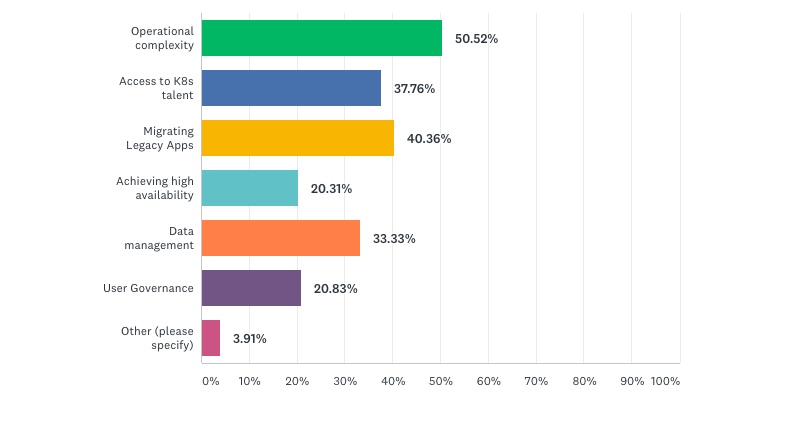
Complexity of operations continues to plague Kubernetes deployment in production. This was the #1 concern and challenge of the survey participants.
While it may be relatively easy to deploy Kubernetes initially for experimentation and Proof of Concepts, operating it at scale, monitoring and alerting, maintaining high availability, and achieving non-disruptive upgrades is enormously challenging.
All of this requires in-depth Kubernetes expertise, operational experience with cloud-native architecture, integration with other enterprise components, and finally the need to stay up to date with the constantly evolving open source projects.
40.3% of respondents also reported having challenges with migrating their legacy to Kubernetes, which also turns out to be one of the top use cases for Kubernetes (See Takeaway #5).
All of this requires Kubernetes talent which is hard to find and much harder to retain due to the market demand for such talent.
A quick search on Indeed.com shows 9,934 Kubernetes jobs!

This explains the almost 38% respondents saying they are having challenges having access to Kubernetes talent.
3. Multi-cloud Kubernetes deployments are already a reality
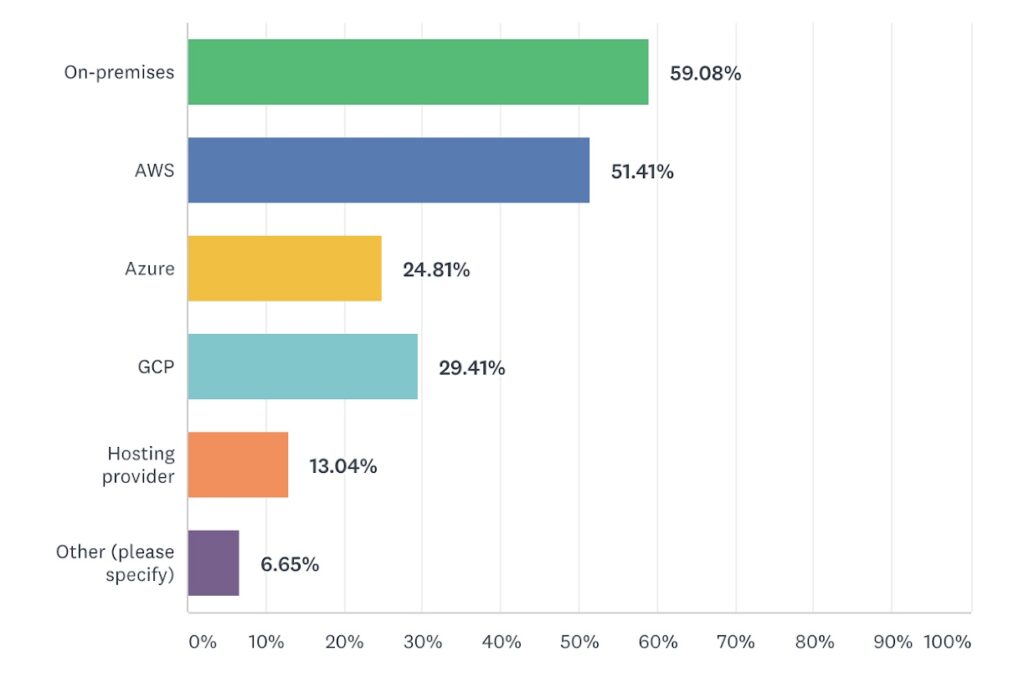
On-premises Kubernetes production deployments dominate where users want to deploy K8s in the next 12 months – with nearly 60% of enterprises looking to run Kubernetes in their own data centers. Not surprisingly, 51% of the respondents indicated that AWS is their target environment of choice for public cloud deployments. Google Cloud Platform is making some headway (29.4%) and getting ahead of Azure (24.8%)
In many cases, the majority of respondents indicated that they run Kubernetes on BOTH on-prem and public cloud infrastructure. This is another evidence that multi-cloud is already a reality in the enterprise. With the number of different, mixed environments (private/public cloud as well as at the edge) projected to continue to grow – avoiding lock-in, ensuring portability, interoperability and consistent management of K8s across all types of infrastructure — would all become even more critical for enterprises in the years ahead.
4. Kubernetes add-ons growing fast
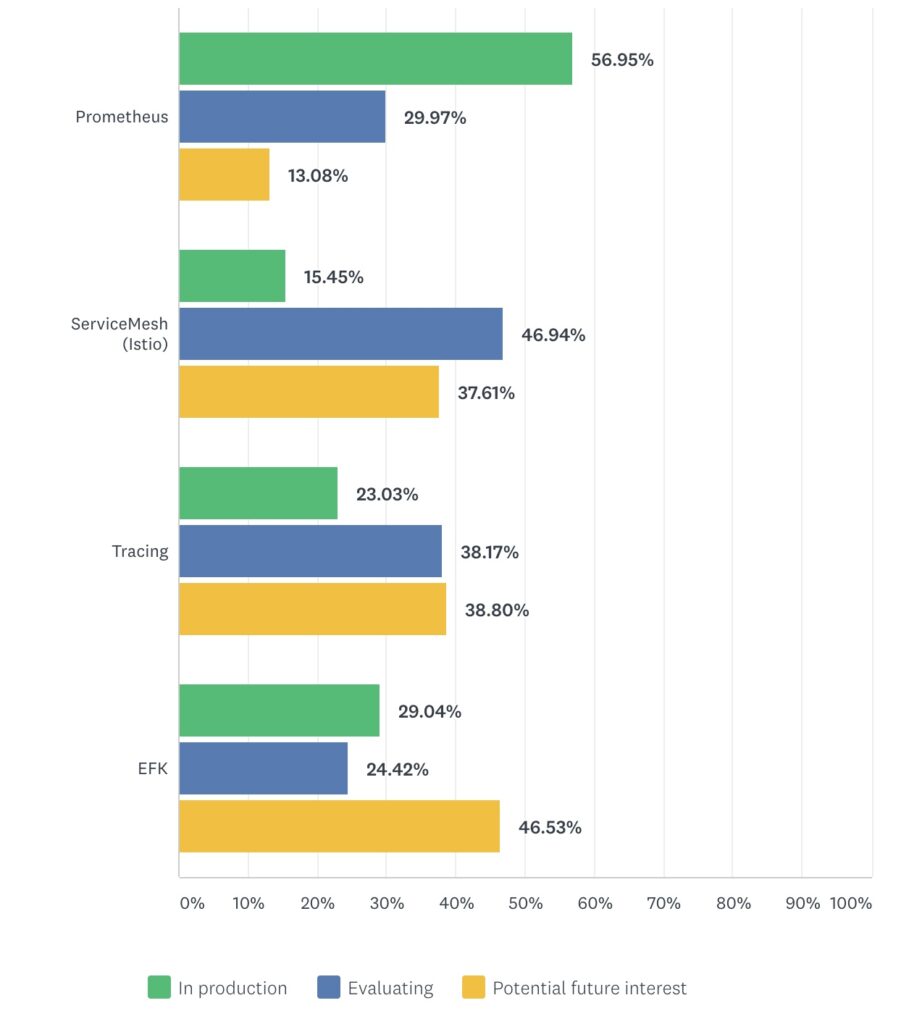
Kubernetes by itself is not sufficient to build out a complete cloud-native infrastructure that is enterprise-ready. Enterprises need monitoring, tracing, logging, search, and visualization to be able to manage mission-critical applications in production.
Prometheus monitoring project is already in widespread production environments (56.95%), and nearly 47% are evaluating Istio.
However, in various conversations, people have mentioned they have the same operational complexity and lack of talent issues with these technologies as well.
5. CI/CD automation and Containerization of legacy applications are the top Kubernetes use cases
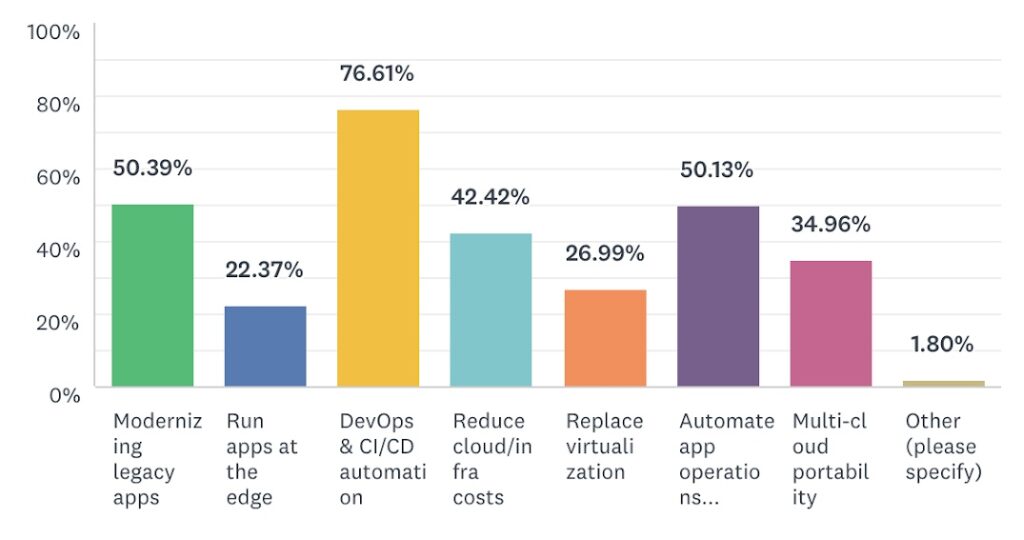
With 76.6% responses, the top use case for Kubernetes was CI/CD automation used to accelerate app delivery into production.
Modernizing legacy apps (50.4%) tied closely with Automated App Operations (50.1%) for the next most popular use cases.
Multi-cloud portability was an important use case and this makes sense since many of the participants were already using multiple public clouds and on-premises infrastructure to run Kubernetes.
Summary
It’s astonishing to see what Kubernetes has accomplished in just 5 short years.
In 2018, Kubernetes become the first technology to reach the CNCF “graduated level”, a stage of maturity defined by CNCF, which indicates that the technology has “crossed the chasm” and is being used by “early majority” customers. This was a key milestone which demonstrated that Kubernetes reached a level of enterprise-grade readiness, with an explicitly defined project governance and committee process. At the same time, Kubernetes was acknowledged widely in the industry as having won the container orchestrator battles leaving the rest of the contenders in the dust. Quite a feat for a four-year-old technology.
Fast forward to 2019 KubeCon in Barcelona, Kubernetes-reaches another milestone: it is quickly becoming an “invisible essential” of the daily life for DevOps teams at major enterprises, who are leading this new revolution.
Other projects such as fluentd, Prometheus, Istio etc are quickly maturing and integrating with Kubernetes to form a core of technologies that would enable enterprises to rapidly roll out new cloud-native applications such as machine learning, edge computing, and the Internet of Things. Kubernetes is almost certain to be at the heart of their success, paving the way for digital transformation journey – for startups and large enterprises alike. The innovation in the space is awe-inspiring, but there are still a lot of challenges to overcome. Kubernetes is still difficult to run and operate at scale, particularly for multicloud/hybrid environments- spanning on-premises data centers and public cloud infrastructure. Hiring talent and retaining them to run Kubernetes operations is getting increasingly difficult. The rise of associated technologies such as Prometheus and Istio with similar challenges slows down deployments and delays enterprises from taking full advantage of the benefits these technologies are offering.
Platform9 Managed Kubernetes is the industry’s only SaaS-based, continuously managed Kubernetes service that guarantees 24x7x365 SLA and runs everywhere: on-premise data centers, multiple public clouds, and at the Edge.
This fully-managed service eliminates the operational complexity in scaling Kubernetes for enterprise workloads by delivering it as a Service — with automated deployments, real-time monitoring, zero-touch, upgrades, high availability, and troubleshooting — all handled automatically, with a 99.9% uptime SLA guarantee backed by our Kubernetes Certified Experts 24x7x365.
Learn more about our Managed Kubernetes solution, and check out the sandbox to see how easy Kubernetes in the enterprise can be!




